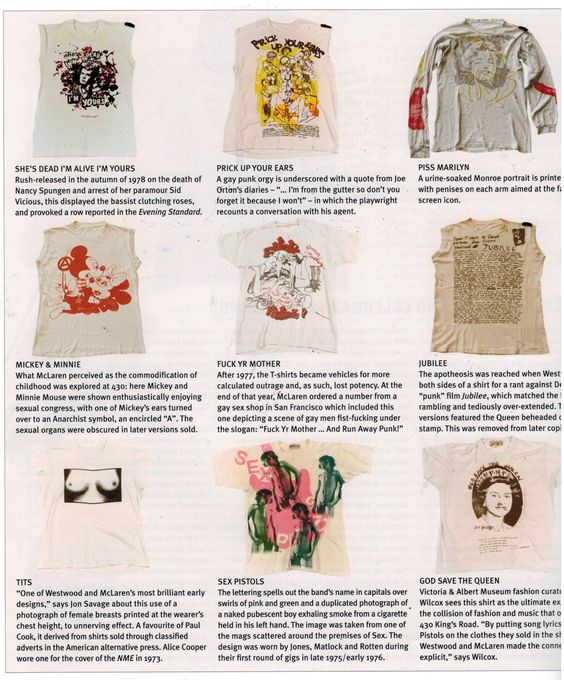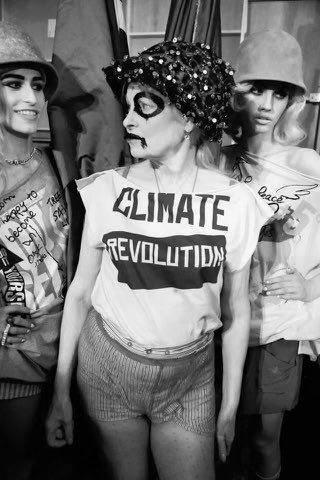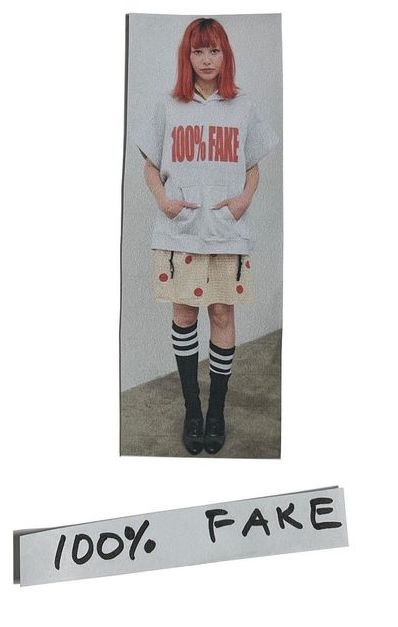Clothes that Speak

“I wear black on the outside, ‘cause black is how I feel on the inside.”
As Morrisey sang, we dress to show how we feel, who we are, who we want to be, and what parts of society we want to be associated with. This pattern has existed for centuries and explains the origins of many modern subcultures identifiable by their styles. Goth, for example, has aesthetic origins in the Victorian era, when sickness and death were so prevalent that most people wore black, to show their state of mourning. Modern gothic aesthetic refers to this time of gloom and horror, both romanticizing it and wallowing in its sadness. On a smaller scale, we may show who we are through fashion that refers back to periods of our own life. Coquette style is typically a personal, nostalgic reference to repressed femininity during childhood. In this way, those who present themselves with this aesthetic appear youthful and empowered in their femininity.
But when a meaningful, radical style becomes popularized, the look becomes homogenous and loses its political meaning. The mini skirt, which first made an appearance in the 60s as a form of feminist protest, is now a staple item in feminine fashion. Punk fashion, born in the 1970s in London, used to represent anti-establishment sentiments, and now may just mean you have a Hot Topic in your local shopping mall. The same evolution can be seen in nearly every kind of Western clothing imaginable. Many popular garments originated with purpose and evolved to be no more than aesthetic in mainstream fashion. Blue jeans, cargo pants, and overalls were all created as heavy-duty workwear for blue-collar workers; The camo print of military wear originated as a practical safety precaution for soldiers on the battlefield; these have all evolved to have their fair share of time on the runway and as cheap reproductions on the racks of Zara and Forever 21. Even Burberry’s iconic trench coat was originally produced for the protection and practicality of British officers in the trenches during World War I.
So if the shape, color, and fabric of our garments have lost their meaning, how do we communicate political and social meaning today? With graphics, of course!

The graphic tee’s origins can be dated back to the early 1900s, first appearing in the 1939 film, The Wizard of Oz, as an identifier for minions working for Oz. Graphic tees continued to be used as an identifier for decades, for example, to label soldiers from different sections of the U.S. military, but the marketing power of the graphic tee quickly became evident. Politicians and companies like Disney began printing images and slogans on shirts as a way of marketing themselves, and by the 1970s the ultimate graphic tee– the band tee– emerged. By wearing a tee shirt that promoted a company, band, or person, the wearer was associated with the reputation and ideals of the subject, thus making the graphic tee political. In 1973, the political graphic tee was so effective that the New York Times dubbed it “the medium for the message.”
Around the same time, Vivienne Westwood, queen of punk fashion, began using text and symbolism to promote her own political agenda. Since the opening of her first shop, SEX, in 1970s London, Westwood and her early business partner Malcolm McClaren produced graphic t-shirts with phrases like “Be reasonable, Demand the Impossible,” “Destroy,” referring to the accompanying swastika, and various other provocative phrases and visuals. The graphic tee concept was maintained for the rest of her career, helping her advocate for anti-establishment ideals and climate justice.
Other high fashion brands have had their go at graphic tees on the runway, such as Dior’s famous “We Should All Be Feminists” tee from 2017. But it is not high fashion that most famously utilizes graphic clothing– it’s the everyman with something to say.
In the 2020s, brands such as Praying, OGBFF, and Moonkissed Collective are selling out their witty and ironic stock, visualizing the modern political statement that is ironic fashion. In an ode to iconic early 2000s graphic tees, such as Paris Hilton’s “Stop Being Poor” and Britney Spears’ “Dump Him” shirts, the trend of bold, outrageous, and flirty-phrased shirts is back. A recent release from Praying is a baseball cap that repurposes the New York Yankees logo to say “SkinNY”, an ironic punch at body trends. The text is placed on top of camo print, another layer to this ironic Americana style that disregards the original purpose and cultural significance of the pattern. Praying, per its name, also produces many ironic religious pieces, such as a skimpy bikini with the text “Father, Son, Holy Spirit” placed in areas the Catholics are sure to disagree with. In its own way, Praying is pushing an anti-establishment agenda, one that sees through the advances of American nationalism, religious propaganda, and dangerous social norms. Moonkissed Collective, in truer reference to y2k fashion, is popular for their simplistic graphic tees that sport romantic, nostalgic content, with an air of inauthenticity– that is to say, the brand doesn’t take themselves too seriously. Similar to Praying, the brand pushes its own radical ideas– mainly that of radical femininity, which is often deemed inferior by society. In a push of exaggerated irony, the brand OGBFF makes simple yet ridiculous graphics that almost seem to poke fun at the idea of graphics themselves. Examples of this are their hat that says “GIRL” on it, their mini skirt printed with “MINI SKIRT”, and their sweatshirt that says “100% FAKE”, referring to the “chronically online” and inauthentic culture that young people have come to accept having grown up with social media.

While ironic graphics are having a moment, the popularity of the graphic has not been minimized to this aestheticized subculture of fashion. Mainstream politicians and celebrities, per the decades-long pattern of agenda-pushing through fashion, continue to make statements with graphic clothing in highly publicized settings. At the 2021 Met Gala, U.S. Representative Alexandria Ocasio-Cortez displayed “Tax the Rich” in striking red brushstrokes on the back of her gown, while the model/actress Cara Delevigne wore a chest piece printed with “Peg the Patriarchy”; Pop-star Harry Styles is often seen in a “Women Are Smarter” t-shirt and Bella Hadid was spotting wearing a shirt saying “OK, hand over the cure and stop playing” during the height of the Covid pandemic. Certain graphic garments have become iconic due to their significant meaning, such as Donald Trump’s “Make America Great Again” baseball cap, which has been parodied in numerous ways as a reactive statement.
It’s clear that the graphic tee and its partnering graphic garments are here to stay, with few, if any, breaks in popularity since breaking into mainstream fashion. Its popularity is due to its simple effectiveness– what better way to communicate purpose to an audience than to print it clear as day onto the clothing you wear?
But the graphic garment has become more than simple, more than effective. It has become necessary. In recent years, the ever-accelerating trend cycle has become overloaded by micro-trends and popular subcultures that cloud the mainstream with clashing fashion formulas, and we have reached a point where nearly everything is in style. The clothes of goth fashion overlap with those of coquette, the military aesthetic overlaps with the punk, and athletic styles are worn with summer dresses in ways that contrast every trend pattern before this decade. And in this time of overload, over consumption, and overproduction of garments and styles, how else are we to communicate meaning in our fashion than with a good old-fashioned graphic tee?





